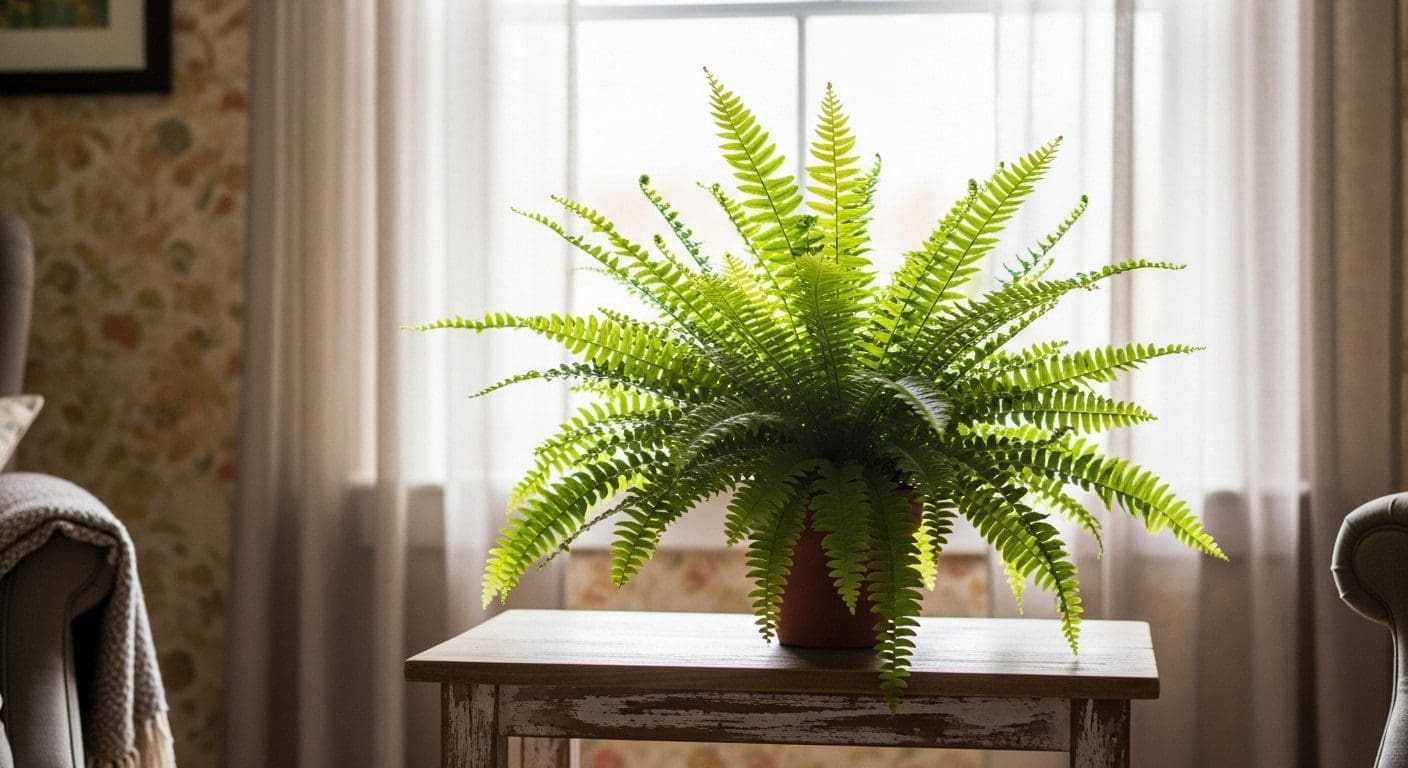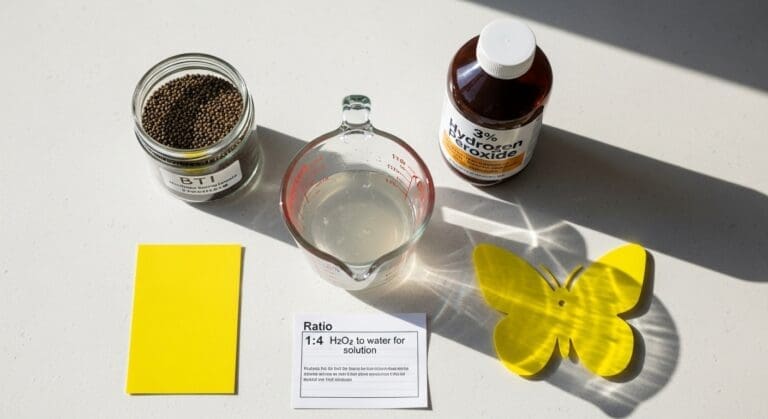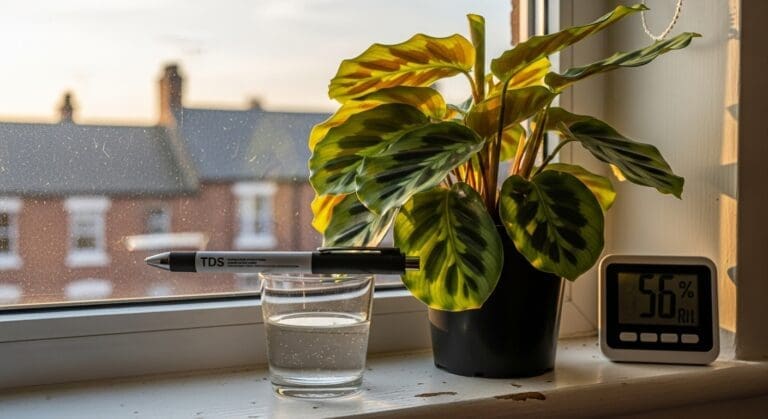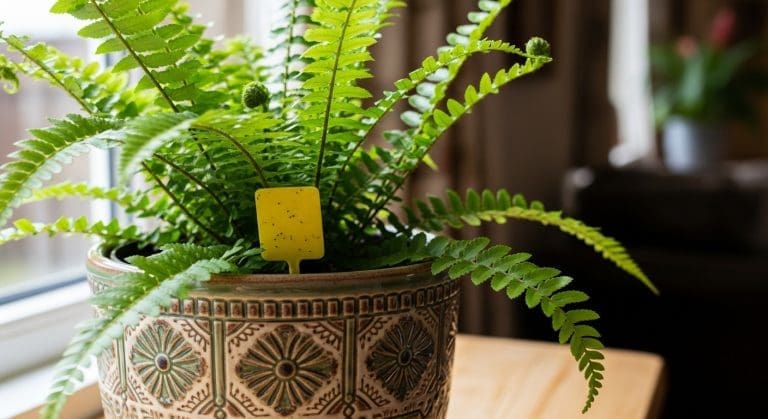There’s nothing more heartbreaking for a plant lover than watching a once-lush fern slowly lose its charm. Yellowing, browning, and wilting leaves are among the most common issues — but they’re also some of the easiest to fix once you understand the cause. Whether your fern lives on a sunny windowsill in a busy city flat or hangs gracefully in a shaded corner of your living room, knowing how to read its signals can make all the difference.
| Symptom | Likely cause | How to confirm | Fix (quick) |
|---|---|---|---|
| Yellowing fronds | Overwatering or underwatering | Soil smell/feel; pot weight test | Drainage check; water when top ~1–2 cm is just drying |
| Brown tips/edges | Low humidity; hard/chlorinated water; excess sun | RH reading; white crust on soil; sun exposure | Leaf-level RH ~50–70%; use filtered/rainwater; diffuse light |
| Wilting/collapse | Root rot (overwater) or severe drought | Roots brown/mushy vs. dry/brittle | Trim rot; repot in airy mix; rehydrate slowly |
Understanding Your Fern’s Natural Habits
Ferns are ancient plants, thriving long before flowering plants even existed. They’ve adapted to live under the protective canopy of forests, where light is gentle, humidity is high, and temperatures remain fairly stable. When we bring them indoors, we try to recreate that environment — but sometimes, despite our best efforts, things go wrong.
“Sometimes I feel like my fern is trying to tell me something in a language I can’t quite understand.” That’s when observation becomes your best tool.
If you’re new to rare fern care, our Complete Indoor Fern Care Guide covers everything from basic setup to long-term maintenance.
Why Is My Fern Turning Yellow?
Yellowing fronds often signal that your plant is under stress, but the cause can vary.
1. Overwatering
Ferns love moisture, but soggy roots can suffocate them.
Signs include:
- Lower fronds yellowing first
- Soil that smells musty or sour
Solution: Check that your pot has proper drainage. Water only when the top inch of soil feels slightly dry. If roots look brown and mushy, repot into fresh soil immediately.
2. Underwatering
When ferns dry out too much, their fronds turn pale yellow before crisping.
A quick test? Stick your finger into the soil — if it feels bone-dry two inches down, it’s time for a drink.
Tip: A layer of moss on top of the soil can help retain moisture, especially in drier homes.
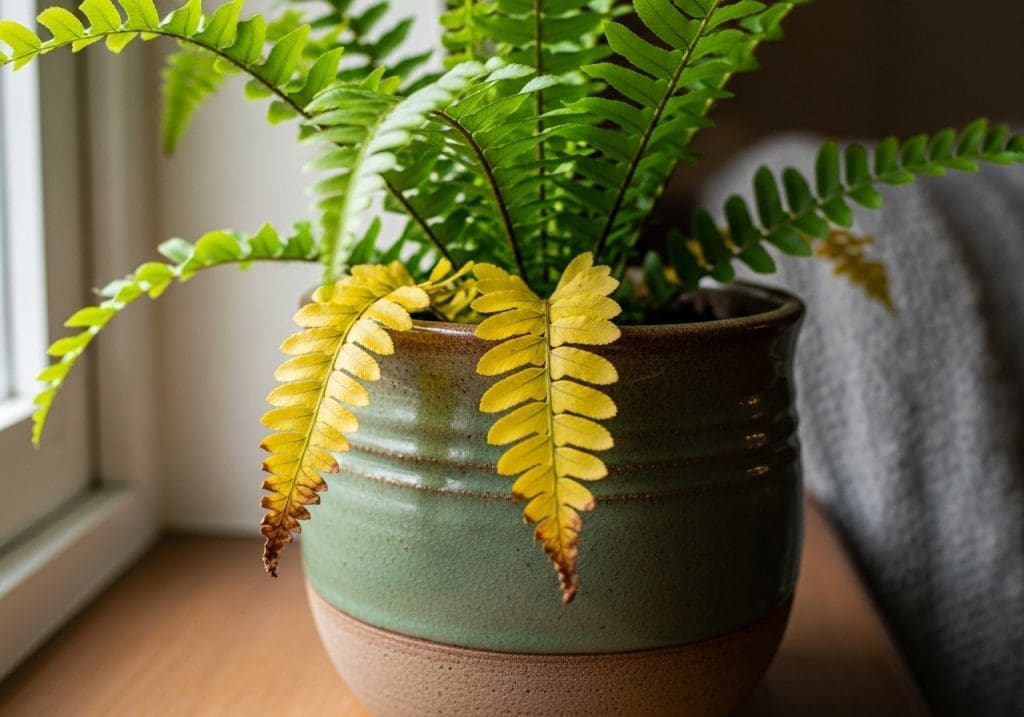
Browning Leaf Tips & Edges
Browning on your fern’s leaf tips can be frustrating, especially when the rest of the plant looks fine. This is usually linked to humidity, water quality, or too much direct sunlight.
Humidity Stress
Ferns thrive in humidity levels of 50–70%, but most heated homes in winter drop far below this. Keep a leaf-level target around 50–70% RH with gentle, continuous airflow, but keep the room-average below ~60% for household safety; ventilate if you see condensation.
Quick fixes:
- Place a small humidifier nearby
- Group plants together to create a microclimate
- Keep them away from radiators or heating vents
“When I added a humidifier to my plant corner, it felt like my ferns breathed a sigh of relief.”
Water Quality Issues
Tap water with high mineral content can burn leaf tips. If you see a white crust on the soil surface, this might be the cause.
Use filtered or rainwater where possible.
If tap water is hard or heavily chlorinated, switch to filtered or rainwater to reduce tip burn and mineral crusting.

Wilting Fern Leaves
Wilting is a dramatic sign that something is wrong — and it often means your fern’s roots are in distress.
Root Problems
- Overwatering can suffocate roots, leading to limp fronds.
- Severe underwatering causes fronds to collapse entirely.
What to do:
Remove the plant from its pot and inspect the roots. Healthy roots are firm and white; unhealthy roots are brown and soft. Trim damaged roots and replant in a fresh, airy soil mix.
Healthy fern roots are firm and pale; rotten roots are brown and mushy—trim to healthy tissue and repot into a free-draining, peat-free mix with added perlite or bark.
Sudden Environmental Changes
Moving a fern from a shady spot to direct sun can shock it. Always transition gradually when changing its location.
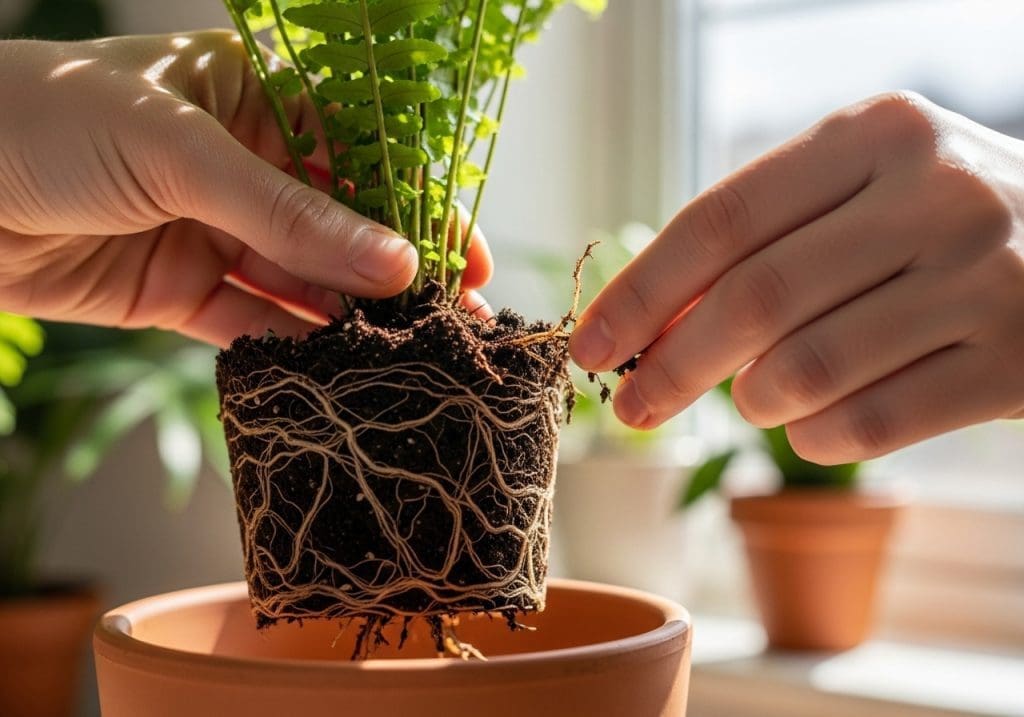
Seasonal Triggers for Fern Problems
Your fern’s needs change with the seasons, even indoors.
- Winter: Indoor heating dries the air; reduce watering but increase humidity.
- Summer: Growth is faster, so your fern may need more frequent watering and occasional feeding.
- Spring/Autumn: Watch for pests like spider mites that thrive when conditions shift.
Winter heating and summer AC both dry the air; track RH with a hygrometer and adjust humidifier run-time accordingly.
For detailed seasonal care strategies, see our guide on Seasonal Fern Care: Adjusting Water, Light & Humidity All Year.
For deeper reference, explore the Missouri Botanical Garden Plant Finder and university extension fern guides; they summarize species-level needs and common indoor issues clearly.
You can read more about fern care basics in the Missouri Botanical Garden’s fern growing guide.
Pest-Related Problems
While not as common indoors, ferns can fall victim to:
- Fungus gnats (from overwatered soil)
- Scale insects (small, shell-like bumps on fronds)
- Mealybugs (white cottony clusters)
Control tips:
- Remove pests manually with a cotton swab dipped in alcohol.
- Use yellow sticky traps for fungus gnats.
- Isolate affected plants to prevent spreading.
Preventing Future Problems
Healthy ferns start with the right foundation:
- Light: Bright, indirect light is best; avoid direct midday sun.
- Soil: A well-draining, peat-free mix with added perlite or bark.
- Feeding: Use a balanced liquid fertilizer at half strength during active growth.
Aim for medium/bright indirect light, evenly moist but airy mix, and consistent leaf-level humidity—these three stabilize most fern issues.

The beauty of fern care is that every problem is also an opportunity to understand your plant better. By spotting early signs of stress — yellowing, browning, or wilting — you can take action before the damage is permanent.
After all, a healthy fern isn’t just decoration — it’s a living connection to one of the world’s oldest plant lineages. And once you tune into its subtle signals, caring for it becomes second nature.
Change log: Aug 2025 — Added fern triage table; clarified humidity targets and room safety; added water-quality note; replaced unverifiable quote with vetted references.

RarePlantCare Editorial Team produces expert content on rare plants.
Our articles are AI-assisted and human-edited before publication.
We aim to provide practical, evidence-based guides for plant lovers worldwide.
Learn more about our Editorial Policy


